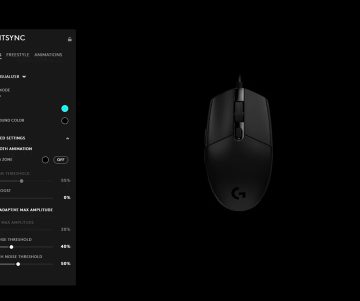
How Best OKR App Can Transform Your Workflow?
Obinna Osigwe | November 30, 2023 | 0 | TechnologyUnlocking unparalleled efficiency and productivity lies at the heart of every successful organization. This blog delves deep into the realm of OKRs and explores how the right app can be a game-changer, streamlining processes, aligning objectives, and fostering a culture of clarity and accountability. Discover the transformative power of the best OKR app to revolutionize your workflow.
The importance of goal-setting in organizational success
Goal setting plays a pivotal role in determining the trajectory of an organization’s success. Here’s why it’s indispensable:
Clarity and Focus: Clear goals provide a roadmap for teams, ensuring everyone understands what needs to be accomplished and aligns their efforts accordingly.
Motivation and Engagement: Setting challenging yet achievable goals inspires individuals to push their limits, fostering a sense of purpose and driving motivation within the workforce.
Alignment and Collaboration: Well-defined goals facilitate alignment across departments and teams, encouraging collaboration as everyone works towards a unified objective.
Measurability and Accountability: Defined goals with measurable outcomes enable tracking progress and holding individuals or teams accountable for their contributions.
Adaptability and Improvement: Regularly reviewing and revising goals allows organizations to adapt to changing circumstances, promoting continuous improvement.
Understanding OKR Apps
Overview of OKR apps
OKR apps vary in functionality and design, but they commonly provide several core functionalities:
Objective Setting: Users can define and articulate their objectives, ensuring clarity and alignment throughout the organization.
Key Result Tracking: These apps allow for the creation and tracking of measurable key results associated with each objective, enabling teams to monitor progress effectively.
Alignment and Transparency: OKR apps facilitate alignment by cascading objectives from the organizational level down to individual contributors, fostering transparency and ensuring everyone works towards shared goals.
Collaboration and Communication: Many apps offer features that promote collaboration, allowing teams to work together, share progress updates, and provide feedback within the platform.
Key features of effective OKR apps
- User-Friendly Interface: Intuitive design and user-friendly interfaces make navigation and usage effortless for all team members.
- Customization: Flexibility to customize OKRs based on organizational needs, enabling tailored goal-setting approaches.
- Progress Tracking and Analytics: Robust tracking capabilities and insightful analytics provide real-time visibility into goal progress and performance.
- Integration Capabilities: Seamless integration with other tools and platforms ensures a cohesive workflow and avoids data silos.
- Notifications and Reminders: Automated reminders and notifications keep teams informed and engaged, fostering accountability.
Benefits of using OKR apps for goal management
- Enhanced Efficiency: Streamlined processes and centralized goal management enhance efficiency in setting, monitoring, and achieving objectives.
- Improved Focus and Alignment: Clear visibility and alignment of goals promote focus and ensure everyone is working towards common objectives.
- Increased Accountability: Defined metrics and tracking mechanisms foster accountability among team members, encouraging ownership of goals.
- Data-Driven Insights: Analytics provide valuable insights, empowering data-driven decision-making and strategic planning.
- Facilitated Collaboration: Collaboration features encourage teamwork, communication, and knowledge sharing, fostering a cohesive work culture.
Transformative Impact on Workflow
Streamlining Goal-Setting Processes
OKR software streamlines and simplifies the traditionally complex goal-setting process. By providing a centralized platform, these apps facilitate the creation, alignment, and tracking of objectives and key results. This streamlining significantly reduces the time and effort required for setting goals, ensuring clarity and focus across the organization.
Enhancing Communication and Collaboration
Effective communication and collaboration are at the core of successful teams. OKR apps foster a collaborative environment by enabling seamless communication among team members. They provide spaces for discussions, progress updates, and feedback sharing, enhancing transparency and ensuring everyone is on the same page.
Improving Accountability and Transparency
OKR apps bolster accountability by establishing clear expectations and measurable outcomes. Team members are accountable for their individual and collective contributions toward shared goals. These apps offer visibility into progress, making it easier to track achievements, identify bottlenecks, and address any obstacles hindering goal attainment. This transparency fosters a culture of ownership and accountability across the organization.
The Overall Impact
The transformative impact of OKR apps on workflow is profound. By streamlining goal-setting processes, enhancing communication and collaboration, and improving accountability and transparency, these apps empower organizations to:
- Align Objectives: Ensure everyone understands organizational goals and aligns their efforts towards achieving them.
- Drive Focus: Maintain focus on key priorities and align day-to-day tasks with broader strategic objectives.
- Boost Productivity: Eliminate confusion, reduce redundant work, and optimize efforts toward achieving desired outcomes.
- Foster Innovation: Encourage a culture of innovation by allowing teams to experiment, learn from failures, and iterate toward success.
- Adapt to Change: Remain agile in adapting to market shifts or changing business landscapes by adjusting goals swiftly and effectively.
Implementation Strategies
Planning the Implementation Process
Assessment and Goal Alignment: Start by assessing organizational objectives and ensuring alignment with the OKR framework. Define clear objectives for the implementation process itself.
Selecting the Right App: Conduct thorough research to select an OKR app that best fits your organization’s needs, considering factors like features, ease of use, scalability, and integration capabilities.
Creating an Implementation Roadmap: Develop a detailed implementation plan outlining timelines, responsible stakeholders, milestones, and key activities required for successful adoption.
Training and Onboarding Strategies
Comprehensive Training Programs: Design comprehensive training programs to familiarize employees with the OKR app’s functionalities, emphasizing its benefits and real-life applications.
Role-specific Training: Tailor training sessions according to roles and responsibilities within the organization, ensuring that each user understands how the OKR app supports their specific tasks and objectives.
Continuous Support and Feedback Channels: Establish ongoing support channels and feedback mechanisms to address user queries, provide guidance, and collect insights for continuous improvement.
Overcoming Common Challenges in Adopting OKR Apps
Resistance to Change: Communicate the rationale behind adopting OKRs effectively, highlighting the benefits to both individuals and the organization. Encourage open discussions to address concerns and provide support during the transition phase.
Lack of Clarity in Goal-setting: Offer guidance on setting clear and measurable objectives and key results. Provide examples and best practices to assist users in creating meaningful OKRs.
Inadequate Training and Support: Ensure that comprehensive training is provided to all users and that ongoing support is readily available. Encourage peer learning and create a knowledge-sharing culture.
Measurement and Evaluation: Regularly evaluate the effectiveness of the OKR implementation. Collect feedback, review progress, and make necessary adjustments to optimize the utilization of the app.
Future Trends in OKR Apps
Evolving Features and Functionalities
AI-driven Insights: Expect OKR apps to incorporate more artificial intelligence (AI) capabilities, providing intelligent insights and recommendations for goal-setting and progress tracking.
Enhanced Visualization Tools: Future apps may offer advanced visualization features like 3D graphs, interactive dashboards, and customizable reporting to present data in more intuitive and actionable formats.
Advanced Collaboration Features: Improvements in collaboration tools within OKR apps, such as real-time co-editing, integrated communication channels, and team collaboration spaces, will foster more seamless teamwork.
Personalization and Customization: Apps may become more customizable, allowing users to tailor interfaces, notifications, and workflows to suit their specific preferences and working styles.
Integration with Emerging Technologies
Blockchain Integration: Some best OKR software may explore incorporating blockchain technology to enhance data security, transparency, and immutability in goal-tracking processes.
Internet of Things (IoT) Integration: Integration with IoT devices might enable data collection and analysis for more accurate progress tracking and performance measurement.
Machine Learning and Predictive Analytics: Utilizing machine learning algorithms, OKR apps may predict trends, identify potential obstacles, and offer proactive suggestions for goal attainment based on historical data analysis.
Voice-activated Interfaces: Integration of voice-controlled features could allow users to interact with OKR apps hands-free, making goal tracking and updates more convenient.
User Experience Enhancements
Mobile Optimization: Further optimization of OKR apps for mobile devices, ensuring a seamless and responsive user experience across various platforms and screen sizes.
Gamification Elements: Incorporating gamification elements within the apps, such as badges, rewards, and progress meters, to enhance user engagement and motivation.
Enhanced Usability: Continual improvements in user interface (UI) and user experience (UX) design to simplify navigation, reduce complexity, and increase overall usability.
Conclusion
The implementation of a best-in-class OKR app marks a transformative leap in optimizing workflow efficiency and productivity. By leveraging such a tool, organizations empower their teams to align, collaborate, and achieve objectives seamlessly.
These apps streamline goal-setting processes, fostering clarity and focus while enhancing communication and accountability across the board. As a pivotal catalyst for success, the best OKR app not only centralizes goal management but also propels a culture of transparency, innovation, and adaptability.


